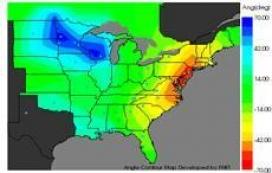Energy, Sustainability, and Infrastructure
Currently Funded Centers
Award No. 2133576
CASFER will enable
resilient and sustainable food production by developing next-generation, modular, distributed and efficient technology for capturing, recycling, and producing decarbonized nitrogen-based fertilizers.Award No. 1941524
Create sustainable, equitable, and widespread electrification of vehicles by creating low-cost, ubiquitous, and worry-free charging
CISTAR’s vision is to create a transformative engineered system to convert light hydrocarbons from shale resources to chemicals and transportation fuels in smaller, modular, local, and highly networked processing plants.
Award No. 1449500
NEWT intends to develop
high-performance and easy-to-deploy water treatment systems that will broaden access to clean drinking water from a variety of unconventional sources and enable industrial wastewater reuse at off-grid locations.Award No. 1449501
CBBG will employ or mimic natural biological processes and materials to engineer the ground in ways that reduce infrastructure development lifecycle costs and impacts while mitigating natural hazards and environmental degradation.
Graduated Centers (Self-sustaining)
CURENT is developing a nation-wide transmission grid that is fully monitored and dynamically controlled for high efficiency, high reliability, low cost, better accommodation of renewable sources, full utilization of storage, and responsive load.
Develop methodologies and application tools for quantifying and mitigating the effects of earthquakes, especially in the central USA, and other low-probability, high-consequence earthquakes. Establish global alliances for assessment and intervention at both the systems and societal levels to protect communities vulnerable to earthquake effects
Provide technology, expertise and services needed for the development of drilling, production and transportation systems that enable the safe and economically viable exploitation of hydrocarbon resources in deep and ultra-deep water
Research and develop the technologies required to support sustainable infrastructure systems by addressing engineering opportunities in critical areas, including resistance to deterioration and resiliency to extreme events
PEER's mission is to develop, validate, and disseminate performance-based seismic design technologies for buildings and infrastructure to meet the diverse economic and safety needs of owners and society. PEER's research defines appropriate performance targets, and develops engineering tools and criteria that can be used by practicing professionals to achieve those targets, such as safety, cost, and post-earthquake functionality.
Dedicated to the discovery and development of new knowledge, tools, and technologies that equip communities to become more disaster-resilient in the face of earthquakes and other extreme events
Develop, apply, and transfer advanced combustion technology to industry through fundamental engineering research and educational programs aimed at the solution of critical combustion problems
FREEDM is developing an electric energy distribution infrastructure system with plug and play capabilities for renewable sources and energy storage systems—i.e., develop a "Smart Grid."
QESST seeks to transform the existing electricity generation system, making it sustainable, ubiquitous, and multifunctional, by developing photovoltaic and quantum energy converters, which fundamentally alter how energy is used.






